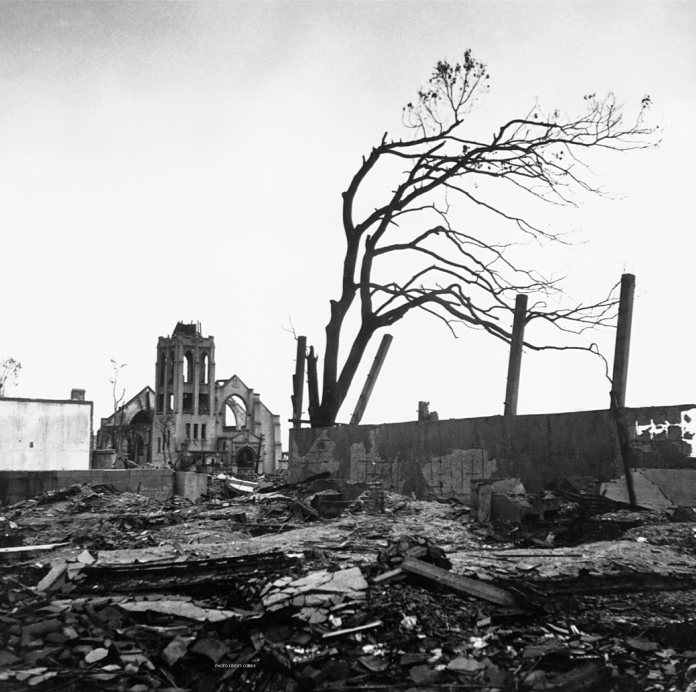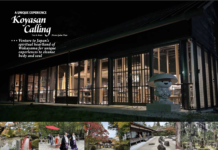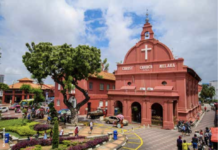Text YD Bar-Ness
Memories have a physical reality. They can spark synapses, leave scars and alter the material existence of a living creature. Trees record, in their rings and shapes, the events that they have endured: drought, forest fire, typhoon and disease. When you look at the rings of a tree, or the shape of its branches, you can begin to read the story that it holds within its very form.
In almost two decades as a biogeographer studying forests and trees, I’ve been fortunate to meet some of the very oldest living things on Earth. They wear their stories on their faces, so to speak, and they tell stories of enduring immense disturbance.
There are giant sequoias and towering eucalypts hollowed and scoured by fires, and there are banyans that have been regularly smashed by raging rivers. There are Douglas firs holding ash from nearby volcanic eruptions in the soil on their branches, and there are Sitka spruces with their stems snapped by the fury of ocean storms. These trees, embodying memory and experience in their physical shapes, are inspiring and educational models of resilience. They remember events in their physical shape.
Forest fires, storms and floods are natural events and ecosystems experience these disturbances frequently. Even volcanic eruptions are regular, natural occurrences. These disturbances are never complete – they leave legacies of structure and life.
Living Legacies
Not all disturbances arrive with precedent or mercy. Hiroshima, Japan, as a geographical and cosmopolitan entity, survived the atomic blasts of August 6, 1945. This defining historical event is remembered worldwide in various ways; its impact and import are felt to this day. In Hiroshima, it is remembered in the rebuilt city’s World Heritage museums and ruins. It is remembered by the schoolchildren – born in a different century – and the medical professionals who will monitor their health into the future. It is remembered by historians, each with their own lens of understanding. It is remembered directly by the hibakusha – the human survivors. It is also remembered by the hibaku jumoku – the survivor trees.
There are almost 200 trees that experienced and survived the direct effects of the atomic blast. Many more did not. Within a radius of two kilometres, 170 trees have been recognised and labelled as living witnesses to the horrific events of that late summer day. Each of these trees – and an unknown number of smaller plants – withstood, or recovered from, the effects of heat, kinetic force and radiation.

From the ruins of war, housing projects are rushed to completion to provide shelter for the inhabitants of the stricken city of Hiroshima, accented by stark, lifeless trees that were killed by the mighty atom blast.
You can visit Hiroshima and find these trees documented by citizens, institutions, and governments. I was fortunate to spend two days visiting these trees in the company of Chikara Horiguchi, an arborist who has been propagating these trees from seeds and cuttings. With his colleagues at Green Legacy Hiroshima and ANTHiroshima, he has been sending these nisei, or second-generation, trees to gardens and individuals around the world as a message of peace.
We were introduced by Hideko Yamada and Nassrine Azimi, who contribute to the outreach and documentation efforts of Green Legacy Hiroshima, and we set forth to meet some of these trees in the centre of the thriving metropolis. Horiguchi-san and I were at first dependent on Hideko’s translation between Japanese and English, but soon we were communicating with the international language of all nature enthusiasts: pointing, pantomime and observation.

(Left) The Hiroshima Chamber of Industry and Commerce was the only building remotely close to standing near the centre of the atomic bomb blast in 1945. (Right) People gather in remembrance of the victims of the atomic bomb in the Peace Memorial Park in Hiroshima, Japan, present day.
Castle Walls and River Banks
At the grounds of the historic Hiroshima Castle, the centuries-old stone walls still stand. Less than a kilometre from the centre of the blast, the wall seems barely touched by modern history. Slow water flows past in a moat, and an Australian eucalyptus tree (Eucalyptus melliodora) stands twisted and green, surrounded by peeling ribbons of bark. There would have been little in the tree’s form to indicate that this tree was notable, but Horiguchi-san revealed a historical photograph of this tree – scorched and branchless – taken shortly after the blasts in 1945.
Even then, the tree was using the special talent of the Eucalyptus genus to regenerate following fire. In the photograph, it could be seen already covered in the fine green cloak of new foliage, almost indistinguishable from natural wildfire recovery in its native land. In the present day, burn marks and decayed sections of wood hint at some specific trauma, but overall, it looked in remarkably good health. A small native pussy willow (Salix chaenomeloides) grows nearby, also gnarled. Its branches are propped up with wooden slats, and a small yellow sign indicates that this tree is also a hibaku witness tree. Willow trees are adapted to floods and unstable sandy soils. They have evolved to withstand tremendous damage; even a small shattered branch that has floated downstream can root and become a new tree. These abilities, and the quantity of water in the moat nearby, may have helped it to resist the moment of the blast.
We visited more witnesses – massive Ginkgo biloba trees with curving temple steps and ornate wooden gates built around them; a grove of trees by a busy road next to a small body of water; a towering camphor (Cinnamomum camphora) surrounded by modern apartment blocks; and a tall leaning Ginkgo on the grounds of a classical Japanese garden in the heart of the city. They told me about the curious phenomenon that had been observed, that the trees were all leaning inwards towards the blast zone. We surmised that, over the years, one scorched side of the tree had been overpowered by a more vigorous sheltered side.

A full spherical photo taken under a gingko tree at Anrajuku Temple that survived the August 1945 atomic blast in Hiroshima.
Even closer to the centre, scarcely 300 metres from the blast, a weeping willow (Salix babylonica) stands by a branch of the river delta. This tree is hardly noticeable, between the water and a parking garage, but it also grows strong and vigorously. Its trunk has a burn mark and is hollowed through with rot, but the leaves are bright green and it provides solid shade from the heat of the sun. This tree was amongst the very closest survivors to the blast.
While nothing in any plants’ genetic heritage could fully prepare it for such a singular experience, it seems notable that several of them have a distinct evolutionary background of somehow surviving disturbances and trauma. Perhaps there is a lesson for us to learn about resilience and regrowth.
A Thousand Origami Cranes
Hiroshima is also at the centre of another symbolic campaign for communicating a message of peace: origami cranes. At the atomic blast, a two-year-old girl named Sadako Sasaki was exposed to radiation. Ten years later, like many other people, she developed the bone marrow cancer leukaemia and was told she had a year to live. Following the Japanese tradition that folding a thousand origami cranes would make a wish come true, she began crafting the paper birds. Unfortunately, she died at the age of 12 with only 644 completed, and her classmates completed the rest.
Sadako herself, a true innocent, would not have been able to imagine the symbolic impact of her death, or the wishes that were made in her memory. Fifty-nine years later, her name is known to every citizen of Hiroshima and to many throughout the world. The Hiroshima Peace Memorial Museum is sent countless origami cranes from children and adults around the world. They are draped in the hundreds and thousands over memorials, hibaku trees and on a statue of Sadako. If you visit Hiroshima, you can purchase origami paper and notebooks made from recycled paper cranes, and begin folding a thousand cranes with your own wish for a better world.
Check out the rest of this article in Asian Geographic No.108 Issue 5 /2014 by downloading a digital copy here. And subscribe to our magazine here!











